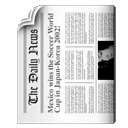Поиск :
Личный кабинет :
Электронный каталог: Moller, M. - Rethinking *a*- RuCl&sub(3) : Parameters, Models, and Phase Diagram
Moller, M. - Rethinking *a*- RuCl&sub(3) : Parameters, Models, and Phase Diagram

Статья
Автор: Moller, M.
Physical Review B: Rethinking *a*- RuCl&sub(3) : Parameters, Models, and Phase Diagram
б.г.
ISBN отсутствует
Автор: Moller, M.
Physical Review B: Rethinking *a*- RuCl&sub(3) : Parameters, Models, and Phase Diagram
б.г.
ISBN отсутствует
Статья
Moller, M.
Rethinking *a*- RuCl&sub(3) : Parameters, Models, and Phase Diagram / M.Moller, P.A.Maksimov, S.Jiang, [a.o.]. – Text : electronic // Physical Review B. – 2025. – Vol. 112, No. 10. – P. 104403. – URL: https://doi.org/10.1103/hflp-41lj.
RuCl&sub(3) was likely the first ever deliberately synthesized ruthenium compound, following the discovery of the &sub(44) Ru element in 1844. For a long time it was known as an oxidation catalyst, with its physical properties being discrepant and confusing, until a decade ago when its allotropic form 𝛼*- RuCl&sub(3) rose to exceptional prominence. This “rediscovery” of 𝛼− RuCl&sub(3) has not only reshaped the hunt for a material manifestation of the Kitaev spin liquid, but it has opened the floodgates of theoretical and experimental research in the many unusual phases and excitations that the anisotropic-exchange magnets as a class of compounds have to offer. Given its importance for the field of Kitaev materials, it is astonishing that the low-energy spin model that describes this compound and its possible proximity to the much-desired spin-liquid state is still a subject of significant debate ten years later. In the present study, we argue that the existing key phenomenological observations put strong natural constraints on the effective microscopic spin model of 𝛼− RuCl&sub(3), and specifically on its spin-orbit-induced anisotropic-exchange parameters that are responsible for the nontrivial physical properties of this material. These constraints allow one to focus on the relevant region of the multidimensional phase diagram of the 𝛼− RuCl&sub(3) model, suggest an intuitive description of it via a different parametrization of the exchange matrix, offer a unifying view on the earlier assessments of its parameters, and bring closer together several approaches to the derivation of anisotropic-exchange models. We explore extended phase diagrams relevant to the 𝛼− RuCl&sub(3) parameter space using quasiclassical, Luttinger-Tisza, exact diagonalization, and density-matrix renormalization-group methods, demonstrating a remarkably close quantitative accord between them on the general structure and hierarchy of the phases, with the zigzag, ferromagnetic, and incommensurate phases that are proximate to each other. One of the highlights is the detailed agreement on the nature of the incommensurate phases that realize two distinct counterrotating helical states.
ОИЯИ = ОИЯИ (JINR)2025
Спец.(статьи,препринты) = С 323.5в - Спиновые эффекты при высоких энергиях
Бюллетени = 48/025
Moller, M.
Rethinking *a*- RuCl&sub(3) : Parameters, Models, and Phase Diagram / M.Moller, P.A.Maksimov, S.Jiang, [a.o.]. – Text : electronic // Physical Review B. – 2025. – Vol. 112, No. 10. – P. 104403. – URL: https://doi.org/10.1103/hflp-41lj.
RuCl&sub(3) was likely the first ever deliberately synthesized ruthenium compound, following the discovery of the &sub(44) Ru element in 1844. For a long time it was known as an oxidation catalyst, with its physical properties being discrepant and confusing, until a decade ago when its allotropic form 𝛼*- RuCl&sub(3) rose to exceptional prominence. This “rediscovery” of 𝛼− RuCl&sub(3) has not only reshaped the hunt for a material manifestation of the Kitaev spin liquid, but it has opened the floodgates of theoretical and experimental research in the many unusual phases and excitations that the anisotropic-exchange magnets as a class of compounds have to offer. Given its importance for the field of Kitaev materials, it is astonishing that the low-energy spin model that describes this compound and its possible proximity to the much-desired spin-liquid state is still a subject of significant debate ten years later. In the present study, we argue that the existing key phenomenological observations put strong natural constraints on the effective microscopic spin model of 𝛼− RuCl&sub(3), and specifically on its spin-orbit-induced anisotropic-exchange parameters that are responsible for the nontrivial physical properties of this material. These constraints allow one to focus on the relevant region of the multidimensional phase diagram of the 𝛼− RuCl&sub(3) model, suggest an intuitive description of it via a different parametrization of the exchange matrix, offer a unifying view on the earlier assessments of its parameters, and bring closer together several approaches to the derivation of anisotropic-exchange models. We explore extended phase diagrams relevant to the 𝛼− RuCl&sub(3) parameter space using quasiclassical, Luttinger-Tisza, exact diagonalization, and density-matrix renormalization-group methods, demonstrating a remarkably close quantitative accord between them on the general structure and hierarchy of the phases, with the zigzag, ferromagnetic, and incommensurate phases that are proximate to each other. One of the highlights is the detailed agreement on the nature of the incommensurate phases that realize two distinct counterrotating helical states.
ОИЯИ = ОИЯИ (JINR)2025
Спец.(статьи,препринты) = С 323.5в - Спиновые эффекты при высоких энергиях
Бюллетени = 48/025
 На полку
На полку 
